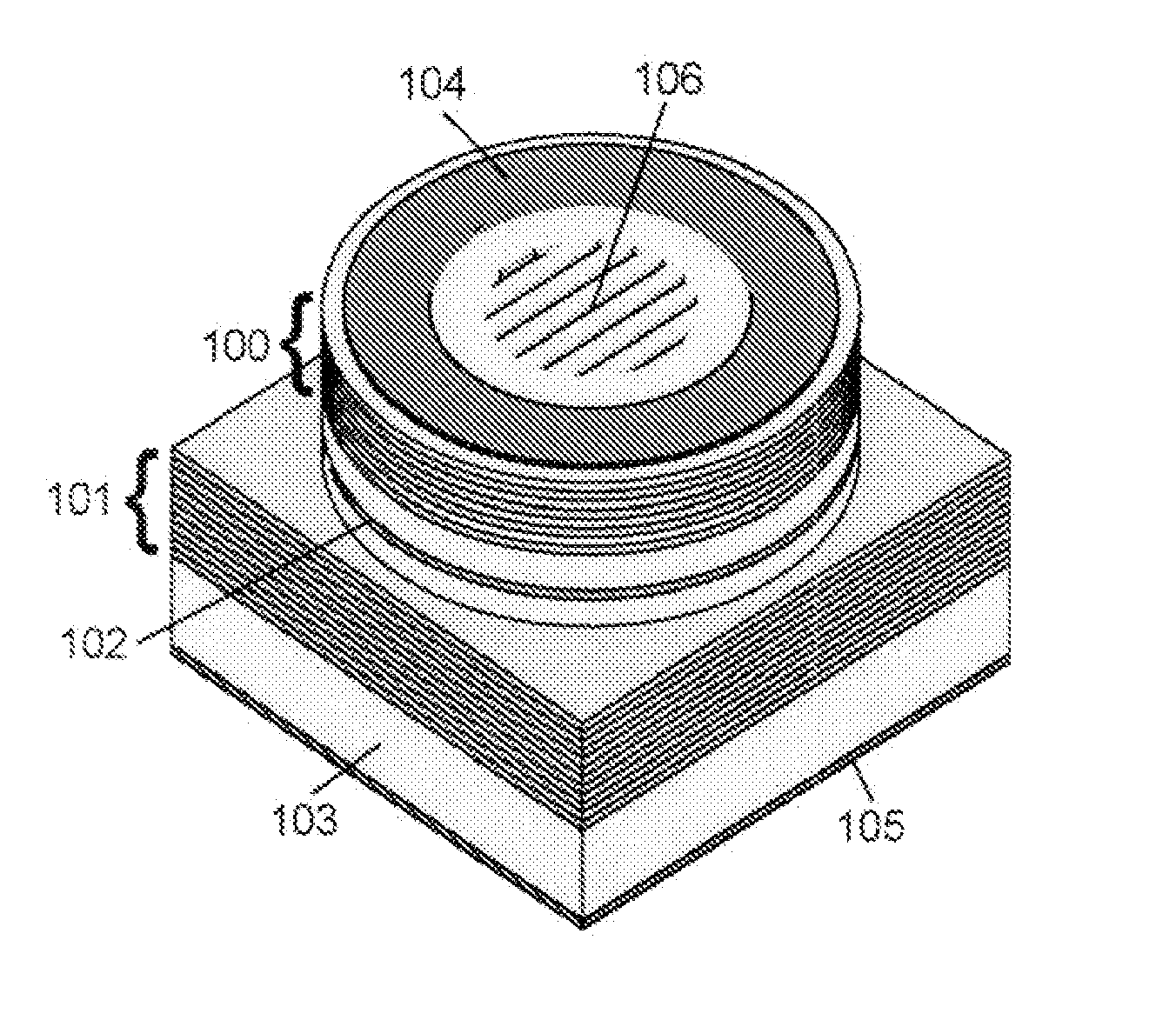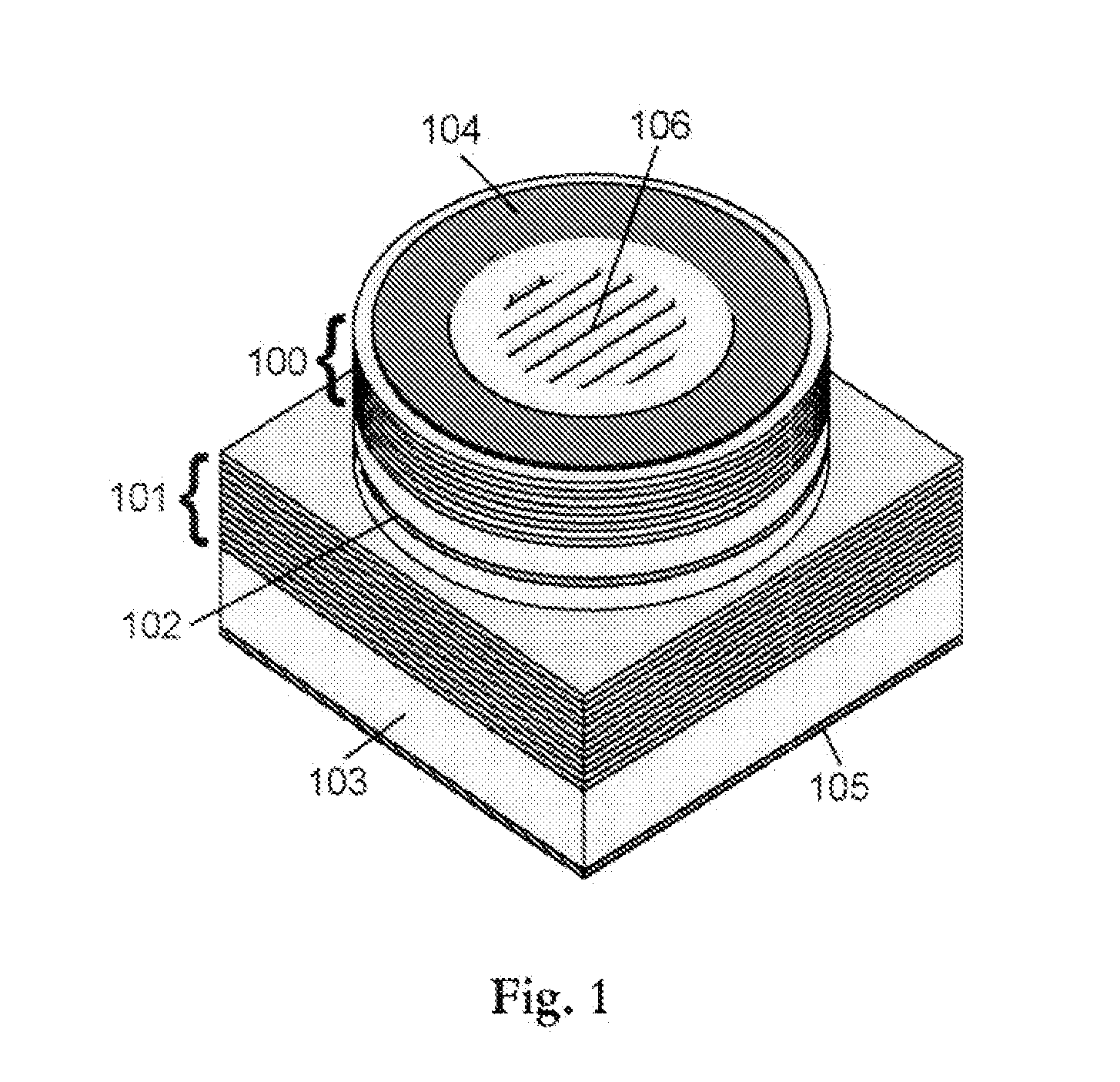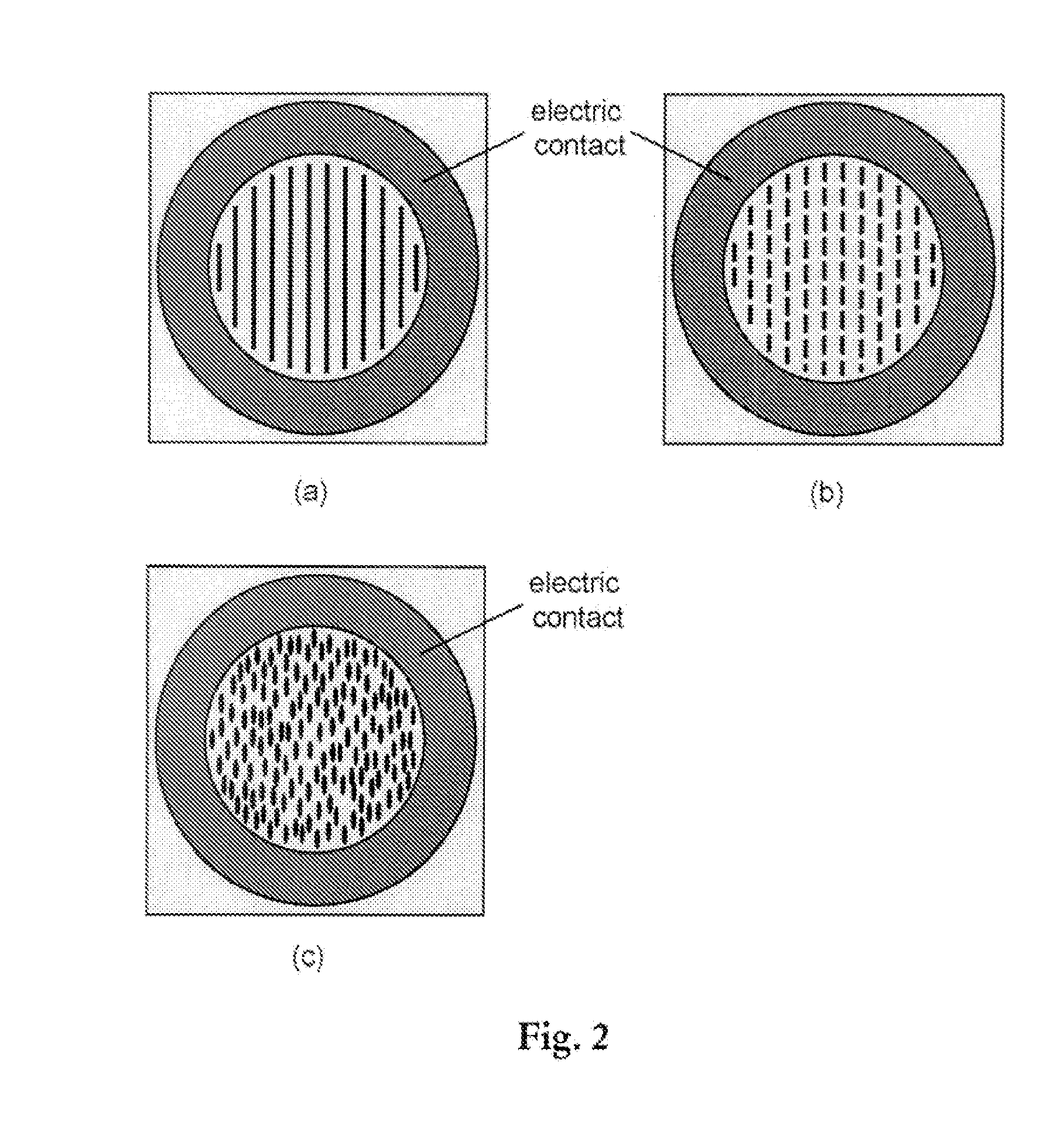Mode and polarization control in vcsels using sub-wavelength structure
a sub-wavelength structure and polarization control technology, applied in lasers, laser details, electrical equipment, etc., can solve the problem of performance being rather insensitive to the exact shape and geometry of the grating, and achieve the effect of minimizing diffraction related losses and beam degradation
- Summary
- Abstract
- Description
- Claims
- Application Information
AI Technical Summary
Benefits of technology
Problems solved by technology
Method used
Image
Examples
Embodiment Construction
[0033]FIG. 1 illustrates an embodiment of the present invention. The VCSEL consists of a top reflector 100 and a bottom reflector 101 which defines the cavity, and an active region 102 sandwiched in between the two reflectors 100, 101. The VCSEL layer structure is normally grown on an appropriate substrate 103 by well-known techniques such as metal organic vapour phase epitaxy or molecular beam epitaxy. In the processing of VCSELs from the layer structure electrical contacts 104, 105 can be applied if the VCSEL is going to be electrically pumped. There are numerous schemes for the contact layout where only one example is shown in FIG. 1. In the present invention, single mode and polarization stable VCSELs are achieved by creating a mode and polarization dependent mirror loss through the use of a specially designed sub-wavelength structure, which in the figure is illustrated with a grating 106, which will be further described below.
[0034] The sub-wavelength structure act as an effec...
PUM
 Login to View More
Login to View More Abstract
Description
Claims
Application Information
 Login to View More
Login to View More - R&D
- Intellectual Property
- Life Sciences
- Materials
- Tech Scout
- Unparalleled Data Quality
- Higher Quality Content
- 60% Fewer Hallucinations
Browse by: Latest US Patents, China's latest patents, Technical Efficacy Thesaurus, Application Domain, Technology Topic, Popular Technical Reports.
© 2025 PatSnap. All rights reserved.Legal|Privacy policy|Modern Slavery Act Transparency Statement|Sitemap|About US| Contact US: help@patsnap.com



